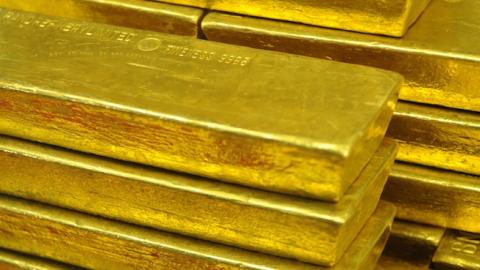Gold bugs may not yet admit it. But almost everyone else knows by now. The market for the yellow metal became deeply infected by the asset price inflation disease emanating from Federal Reserve quantitative easing back in the years 2009-11. Speculative temperature soared as the story that mega money printing would usher in quickly high goods and services inflation went viral. When this failed to materialize the bust followed in slow motion. The episode has understandably detracted from gold’s so-called safe haven appeal albeit that its apologists can point out that the decline in its dollar price has not been out of line with that of the euro and yen in the past three years.
Yet several factors are working to form a solid base of demand for the yellow metal, the world’s principal non-fiat money. First, there is the likelihood of an eventual break-out of high inflation as the global monetary experiment led by the Fed and joined by the ECB and BoJ grows in dimension notwithstanding the Fed’s limp rate lift off. Second, there has been the extinction of any hard fiat money competition to the US dollar as ECB Chief Draghi has smashed any prospect that the euro would become a European Deutsche Mark and PM Abe staged his coup to clear out the old guard at the Bank of Japan. Third the erosion of bank secrecy in offshore centres coupled with US reporting requirements bring into focus gold’s quality of anonymity. Let’s take these points in turn.
When the world’s central bankers are all bemoaning that “inflation is too low”, is there really a live danger of high inflation in the longer term? Of course. Inflation will rise when market interest rates as manipulated by the central banks fall seriously behind their so-call neutral level. At some point this will rise – perhaps due to a flourishing of investment opportunity, perhaps due to a big further increase in budget deficits, perhaps due to a serious decline in personal savings, perhaps due to a flight out of the national money (whether yen, euros or dollars) as a tipping point is reached with respect to confidence in sustainability of public finances. And indeed beneath the immediate camouflage of low positive or negative interest rates there is remorseless deterioration in fiscal trends in the case of Europe or Japan.
With all monetary systems now completely dislocated from a stable high-powered money pivot and central bankers practising data dependent policy management and monitoring distorted price measures one can only fear the worst in terms of future monetary stabiiity. Higher inflation with nominal interest rates piloted at a feeble level and tax levied on nominal income albeit negative in real terms is a situation where gold comes into its own. Yes its real price even today might be twice what it was when the greenback went back on to a metallic standard following the Civil War but given the extent to which world income growth and modern uncertainties have fuelled the overall demand for gold even though now without a core coin or bank reserve component as in the days of the gold standard, is that at all surprising?
True there is a high probability that the feared inflation shock will come in the next business cycle rather than this, given the danger that now inflated asset markets – especially Silicon Valley, high-yield bonds, private equity, for example – will tumble and bring recession. But the response to that downturn is likely to include a ratcheting up of monetary experimentation with raised inflationary risk for further ahead. And we should have no illusions – the fantastic asset price inflation which Mario Draghi is bringing about in Europe, most of all in French, Spanish and Italian government bonds, followed closely by German property and European equities – could end with such a powerful asset price deflation and financial crisis, that the euro collapses before disintegrating. That is a positive scenario for gold and the dollar.
Not so long ago Europe was the provider not just of the world’s hardest money, the DM, but also the most secure offshore tax havens. Soon all that will remain of these tax havens will be safe-keeping boxes in underground vaults. These won’t just contain gold – but also jewellery and fine art. Yet gold has inherent advantages in this competition for vault space. It comes in highly standardized units tradable in highly liquid markets boasting high value relative to mass and weight whose authenticity is immediately apparent. Alchemy will never succeed. By contrast one can only imagine the likely technological progress in copying fine art or in manufacturing fine diamonds – not to mention the science of copying authentication documents. And as to price predictability – who would not rather wager on the value of gold 20 years from now rather than today’s most popular artist?















